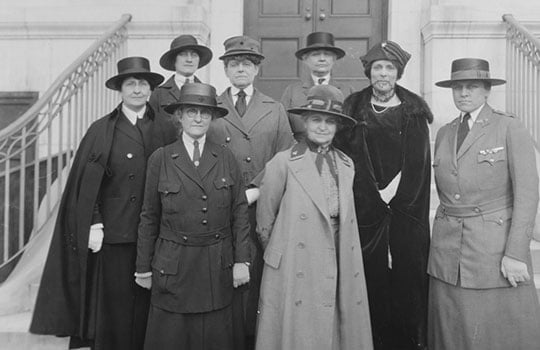McCARTHY, Dame Maud (1858-1949)
Plaque erected in 2014 by English Heritage at 47 Markham Square, Chelsea, London, SW3 4XA, Royal Borough of Kensington and Chelsea
All images © English Heritage
Profession
Matron-in-Chief, Nursing Director in First World War
Category
Medicine
Inscription
Dame MAUD McCARTHY 1858-1949 Army Matron-in-Chief lived here 1919-1945
Material
Ceramic
Dame Maud McCarthy was the most senior nurse on the Western Front during the First World War. She is honoured with a blue plaque at her former home at 47 Markham Square in Chelsea.
BOER WAR
As a trainee nurse, Australian-born Maud McCarthy was described in hospital records as having ‘an exceptionally nice disposition’, being ‘most ladylike and interested in her work’. When the Second Boer War broke out in 1899, she was one of six nurses from the London Hospital selected to become Princess Alexandra’s own ‘military’ nursing sisters in South Africa. She served in this role with distinction and was awarded the King’s and Queen’s Medals, the Royal Red Cross, and a special decoration from the Queen. In 1910 she became Principal Matron at the War Office, and she held this post until the outbreak of the First World War.
FIRST WORLD WAR
McCarthy left England for France with the British Expeditionary Force in 1914 and in 1915 was made Matron-in-Chief of the British armies in France. As such she was responsible for the entire nursing operation on the Western Front, from the English Channel to the Mediterranean. By 1918, she was in charge of over 6,000 British, Imperial and American nurses. The challenges they met were unprecedented in scale and scope: the huge number of casualties ranged from trench foot to injuries from air and gas attacks and mechanised artillery, including bombs, land mines and machine guns.
McCarthy conscientiously visited field units, casualty clearing stations and general hospitals, successfully raising the morale of her staff and working to maintain adequate numbers of trained nurses, in spite of constant shortages. She was not only an inspiring leader but a highly skilled administrator.
Personally modest and unselfish, McCarthy dedicated her life to providing exemplary and efficient care. She was created a Dame of the British Empire in 1918 and was later awarded the Florence Nightingale Medal, the highest international distinction a nurse can receive.
47 MARKHAM SQUARE
McCarthy lived at 47 Markham Square in Chelsea for almost 30 years from November 1919 until shortly before her death in 1949. While there she became Matron-in-Chief of the Territorial Army Nursing Service, retiring in 1925, and remained committed to the nursing profession. A five-storey terraced townhouse, number 47 was built in the 1850s and is close to the Royal Hospital, Chelsea, a nursing and retirement home for solders. When out and about in London, McCarthy was regularly hailed by First World War ex-servicemen, who remembered her warmly for her hospital visits during the conflict.



